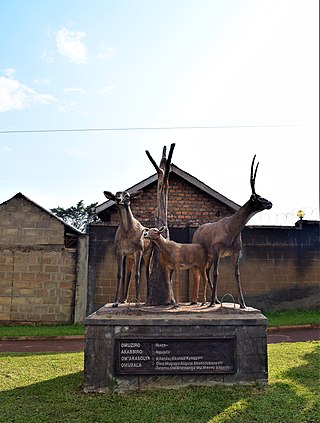Origin
During the reign of King Kintu, there was a local doctor who used to gather medicinal herbs during the night. this local doctor's name was called Kayita. [2]
Whenever the King called for Kayita, he would always appear at the palace before day break. This forced the King to ask him, ''Gwe oli kayita kiro?'' which means ''Are you a night traveller?'' Hence the name of Kayita.
One of Kayita's sons, Nkukunala, was a prominent resident of Busunju County. Nkukunala's son called Ssemuwooya asked his father what their clan was. The father replied saying,''....a big animal that lives in the lake but feeds on land.'' That was also where the ''Ndiira'' name was derived meaning 'to feed or to eat.' The Clan's motto (Omubala) was also derived from the cannotation ,''Mu nnyanja weddiramu ki? Nvubu, Nvubu, Nvubu.'' [2]
Nvubu Clan Heads
These are the main Clan Heads under Kayita:
1. Kavubu of Ntonnyeze, Busujju
2. Sserumaga of Bwendero, Ssese
3. Nkambo of Busaabala, Kyaddondo
4. Kasimaggwa of Mbazi, Kyaggwe
5. Kisongole of Mbazi, Kyaggwe
6. Ggambira of Masujju, Kyaggwe
7. Namugunde of Mbazi, Kyaggwe
8. Sebabi of Mbazi, Kyaggwe
9. Mbuge of Mbazi, Kyaggwe
10. Sempuuwo of Zzinga, Busiro
11. Jjita of Matanga, Busiro
12. Kibowa of Ddamba, Kyaggwe
13. Mutwe of Bugolo, Kyaggwe
14. Mawagajjo of Bugolo, Kyaggwe
15. Ndobera of Buuje (Koome), Kyaggwe
16. Walyato of Kkerenge, Buvuma
17. Kikondo of Bugolo, Kyaggwe
18. Sserufusa of Buligo, Ssese
19. Kanaaba of Mbazi, Kyaggwe [4]
This page is based on this
Wikipedia article Text is available under the
CC BY-SA 4.0 license; additional terms may apply.
Images, videos and audio are available under their respective licenses.











